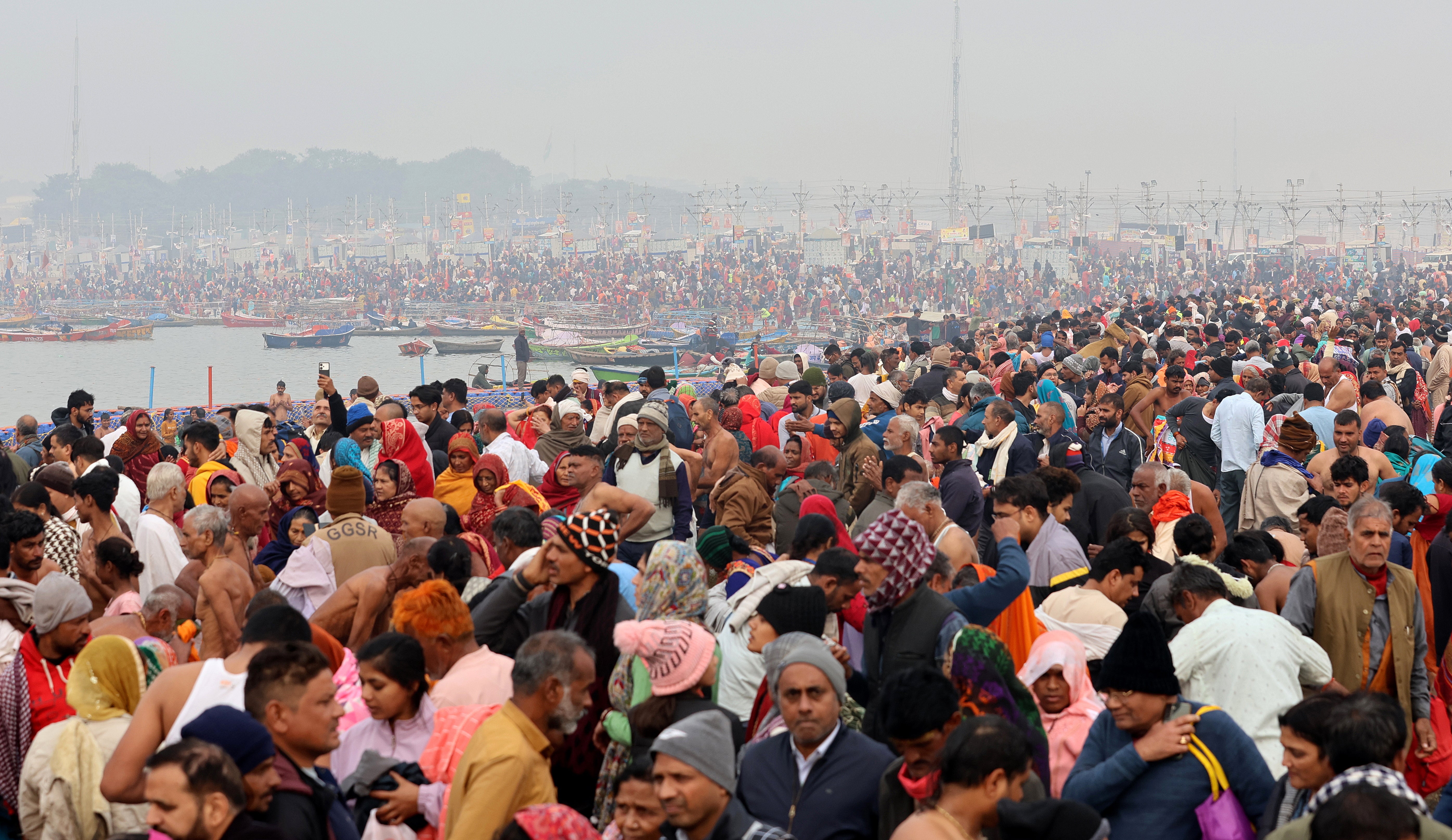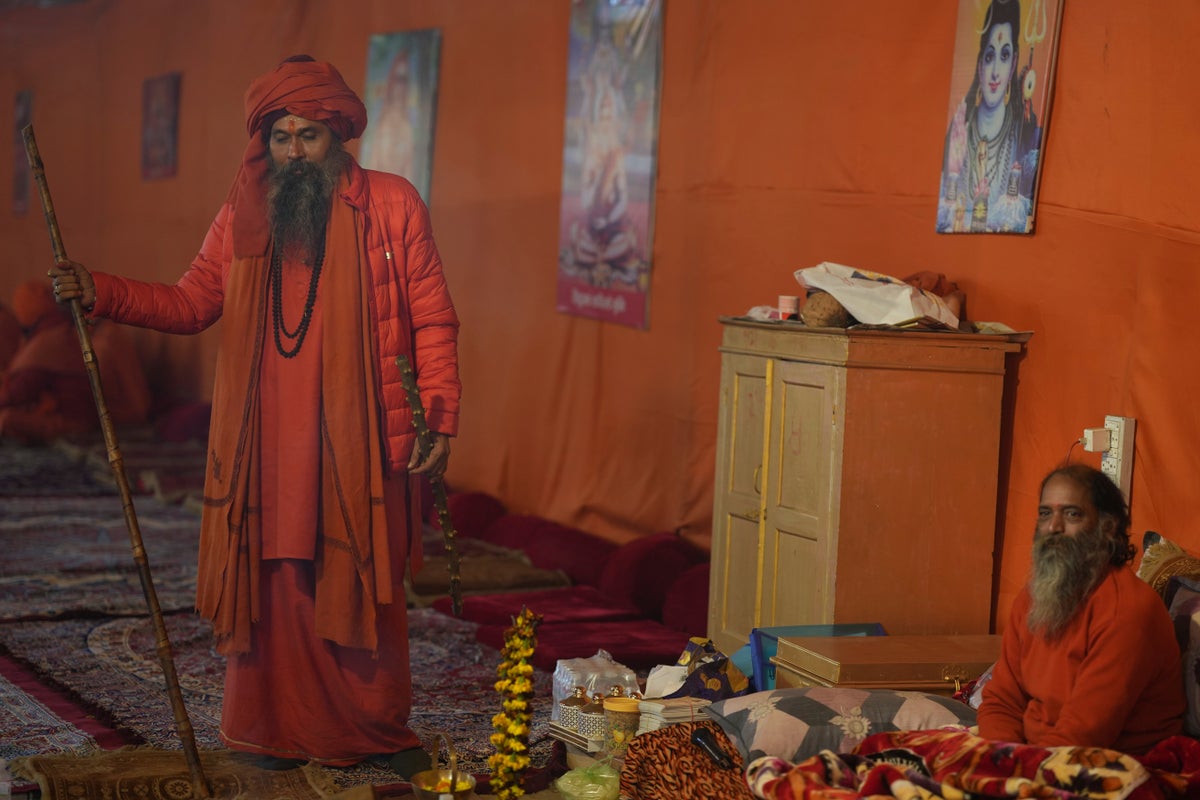India’s Maha Kumbh Mela festival gets under way for first time in 144 years
Share:
The grand version of the 12-yearly Hindu pilgrimage is expected to draw more than 400 million devotees. The world’s largest religious gathering kicked off on Monday as millions of Hindu devotees gathered on the banks of Ganges in India to mark the beginning of the Maha Kumbh Mela.
![[Hannah Ellis-Petersen]](https://i.guim.co.uk/img/uploads/2023/05/17/Hannah_Ellis-Petersen.png?width=75&dpr=1&s=none&crop=none)
The Kumbh Mela pilgrimage takes place every 12 years and is widely seen as the “festival of festivals” in the Hindu religious calendar in India, attended by a vibrant mix of sadhus or holy men, ascetics, pilgrims and tourists. This year’s celebration is particularly significant as the Maha or grand Kumbh Mela only takes places every 144 years, marking the 12th Kumbh Mela and a special celestial alignment of the sun, moon and Jupiter.
![[Pilgrims leave a railway station on the eve of the start of the Maha Kumbh Mela]](https://i.guim.co.uk/img/media/3c9b6bb60c672481f7b26b076d0d3ad3975ac17b/0_0_4956_2974/master/4956.jpg?width=445&dpr=1&s=none&crop=none)
More than 400 million people, the biggest crowd in its history, are expected to attend this year’s festivities, which will be held over 45 days in Prayagraj in the northern state of Uttar Pradesh. Prayagraj is considered particularly holy to Hindus because it is home to Triveni Sangam, the sacred confluence of the Ganges, Yamuna and mythical Saraswati rivers. Over the course of the gathering, there are several shahi san, holy bathing days when the devotees immerse themselves in the waters in the belief it will purify the soul.
![[Some of the first pilgrims to take a holy bath at Triveni Sangam]](https://i.guim.co.uk/img/media/9b26d089eb9e7b15c5ced9fc461a07d34f17e7b9/51_0_5668_3401/master/5668.jpg?width=445&dpr=1&s=none&crop=none)
The exact origin of the Kumbh Mela is debated among historians, but Hindus believe it goes back to the legend of Samudra Manthan, or the churning of the ocean, described in ancient scriptures as when Lord Vishnu spilled drops of the elixir of immortality from his kumbh, or urn, at four spots on Earth – believed to be the Indian cities of Prayagraj, Haridwar, Ujjain and Nashik.
![[Members of the Panchayati Bada Udasin akhara arrive in Prayagraj for the start of the ahead of Maha Kumbh Mela]](https://i.guim.co.uk/img/media/8f0d2044837f3932d7a3f909dc181b2398385055/0_0_4000_2402/master/4000.jpg?width=445&dpr=1&s=none&crop=none)






















